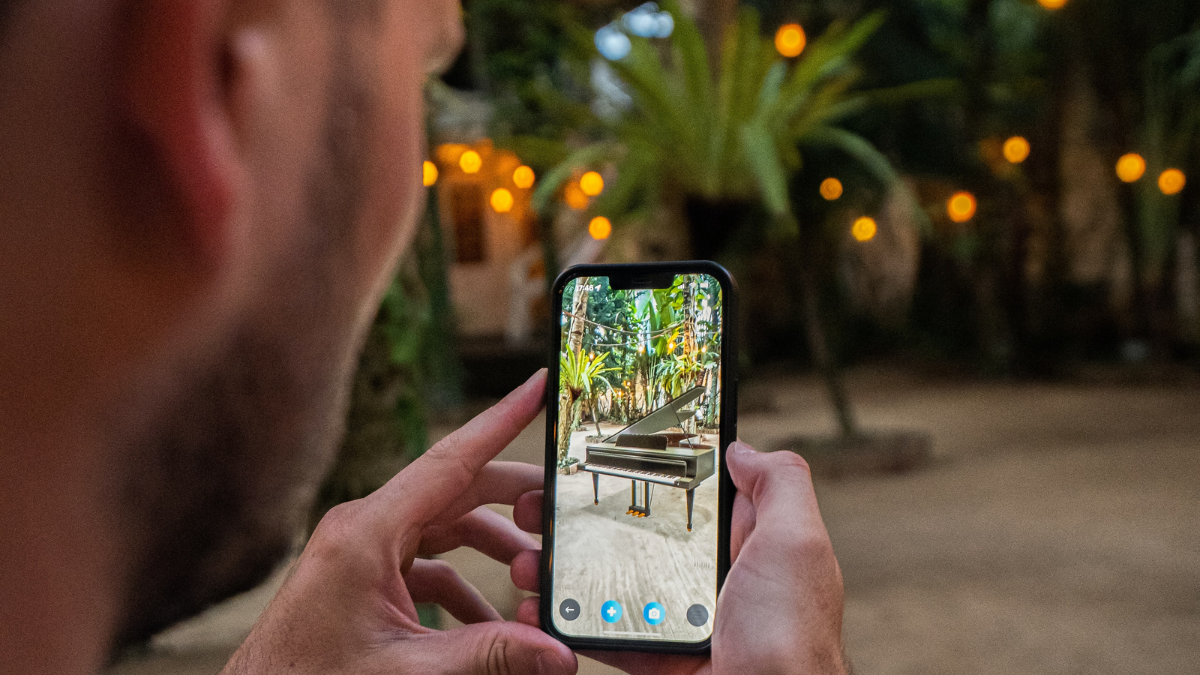People are becoming increasingly comfortable with Augmented Reality (AR). Snapchat says 250 million users engage with its Lenses every day. Where consumers lead, brands follow — which is why we’re seeing a growing range of AR use cases.
One of our guiding beliefs at Pixel Artworks is that ‘wow moments’ are most powerful when experienced in the company of others. A shared moment becomes a memory. The Gorillaz AR concert is impressive enough on-screen, but it can never match what it must have felt like to be in Times Square or Piccadilly Circus. So, this begs the question: how will AR adapt and evolve for live events in 2024?
A seamless integration of technology and the real world
We’ll likely see more of these location-based events in 2024, enabled by advances in smartphones, new mapping technologies and the spread of 5G. You can now see AR experiences integrated seamlessly into the real world at concerts, shows and sports matches. This means it doesn’t matter who joins or at what time because the whole experience is synced — creating a physical and digital shared experience. This example for Princess Cruises, activated at the Los Angeles Rams’ SoFi Stadium, demonstrates what’s possible.
A key benefit of AR is how it allows for multi-layered experiences. Pixel Artworks Originals feature, The Butterfly Trail, showcases that. If they choose, visitors can simply immerse themselves in the sights and sounds of Professor Pelegrin’s botanical workshop and glasshouse, played out across four-storey high, 16K wrap-around screens at Outernet London. But for those who want to delve deeper, they can use browser-based AR to transform digital chrysalises into glittering butterflies that land in the palm of their hand. No added tech needed by the visitor, just a smartphone.
Until now, augmented reality has been viewed as somewhat gimmicky, reserved for PR stunts and product launches. However, this is changing, and we expect to see a shift in adoption to more real-world situations by brands that want to create exceptional experiences in a way that’s never been previously possible in the physical world.
AI will supercharge the development of AR
2024 will be an even bigger year for the Artificial Intelligence (AI) debate, which will no doubt power the development of ever more compelling experiences thanks to its rapidly evolving relationship with AR (and at even faster rates).
We’ve been experimenting with AI for quite a while now. We’ve even had brands request for a project to be created from start to finish with AI, and we’re already using Midjourney and other tools to create content on-the-fly, in response to a user’s prompts. Enabling individuals to co-design a truly open-ended experience will be a monumental breakthrough. As AI becomes the main topic for conferences and trade shows, everyone wants to understand how it might transform their lives. However, something that our team hopes to see more of is a positive outcome for the talks on AI.
AI can make massive improvements to how we work and how we experience things, just like we’ve seen with its use in AR. This is an exciting time for technology, and there are endless possibilities for AI and AR’s use across different industries and fields, especially when it comes to pushing the boundaries for storytelling. This fusion of technology and live experiences will not only make it a more seamless, intuitive, and valuable part of our everyday lives, but it will also encourage the exploration of new creative horizons like never before. We’re excited for what’s to come.
Featured image: Remy Amsterdam / Unsplash

